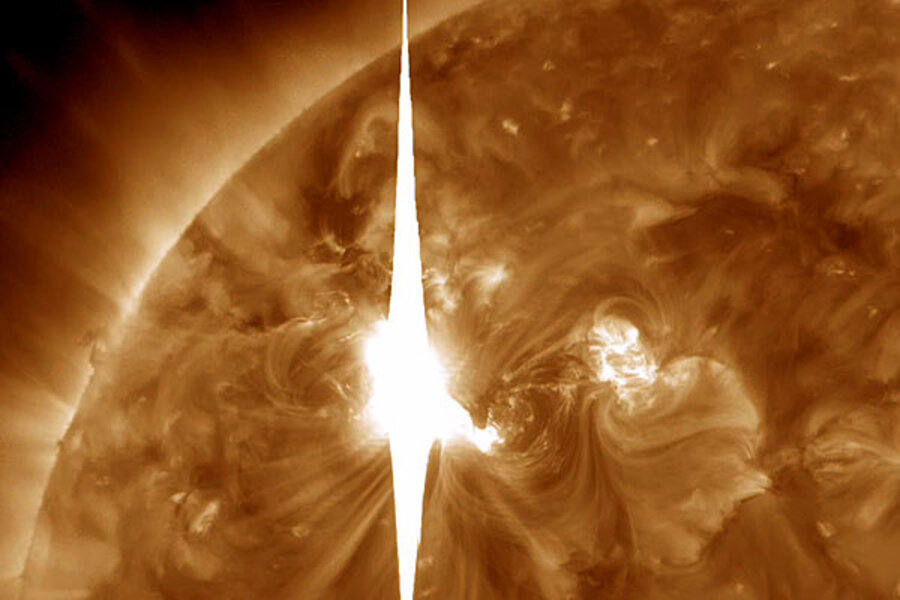Solar flares: Be glad you're on Earth, not Mars
Loading...
When solar storms strike Earth, as they have this week, the planet's magnetic field is a first line of defense against fast-moving clouds of charged particles hurtling from the sun.
A new study hints at how important that line of defense is in fostering a livable planet.
During a bout of turbulence in the solar wind in 2008, researchers found that Mars lost oxygen atoms in its atmosphere 10 times faster than did Earth – an observation the team attributes at least in part to the relative strength of each planet's magnetic field.
It marks the first time researchers have measured the effects of the solar wind on two planets at the same time and under the same windy conditions, and there is hope that the study can be extended to Venus, which has no magnetic field at all.
On one level, the results aren't surprising, the researchers acknowledge. Scientists have long thought that the presence of a natural, magnetic deflector shield would help a planet retain an atmosphere. This is seen as one reason Mars, with a magnetic field one-tenth as strong as Earth's, has such a comparatively tenuous atmosphere.
Yet during the past few years, discoveries involving the Earth's relatively expansive magnetosphere – the region of space around the planet that falls under the influence of its magnetic field – have cast some doubt on details of this generally accepted idea, the researchers say.
Some studies have suggested that the Earth's magnetosphere may be more efficient at transferring energy from the solar wind to the upper atmosphere than on smaller planets with weaker, smaller magnetospheres. This would render Earth's field a less-effective windbreak than previously thought.
By measuring the effect of the same solar-wind conditions on two planets at the same time, researchers can better quantify the shielding effect, as well as make comparisons to see how shield efficiency might change with the size of the magnetosphere.
The team, led by Yong Wei, a researcher at the Max Planck Institute for Solar System Research in Katlenburg-Lindau, Germany, took advantage of a conjunction between Mars, Earth, and the sun in 2008. Mars and Earth lined up on the same side of the sun, an event that occurs roughly every 25 months. That put both planets in the same general solar-wind environment.
Instruments aboard the European Space Agency's Mars Express orbiter, and on a flotilla of four ESA craft that study how the sun affects the near-Earth environment, provided data on the loss of oxygen ions from each planet's upper atmosphere.
When a particularly turbulent region of the solar wind hit each planet, the additional rate of oxygen loss at Mars was 10 times higher than at Earth.
With another ESA orbiter circling Venus and able to make measurements similar to Mars Express and the ESA's near-Earth flotilla, the team is looking forward to a current favorable alignment between the sun, Earth, Mars, and Venus to make additional measurements and comparisons.
This alignment comes as the sun is nearing the peak of its 11-year sunspot cycle, when eruptions like the coronal-mass ejection and solar flares this week happen most frequently. The team hopes to measure the effect these larger, far more energetic blasts of charged particles have on the erosion of atmospheres.
Venus will make an interesting addition to the lineup. It's about as big as Earth, with a far thicker atmosphere, but no magnetic field.
The results of the Mars-Earth comparison are being published in an upcoming issue of the Journal of Geophysical Research.





